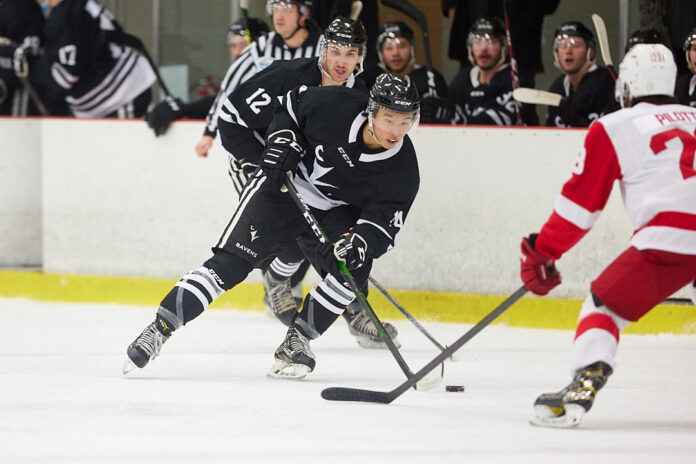
Canadian Hockey League (CHL) players are now eligible to play in the United States’ NCAA after a new ruling which threatens to minimize an already shrinking player pool available to Canadian U Sports men’s hockey.
The NCAA’s Division I council approved a rule change on Nov. 7 to allow players who have played in the CHL to enrol at American Division I schools. Until now, Canadian players had to choose between playing major junior hockey in the CHL or playing in lower-level junior leagues to maintain eligibility for NCAA competition.
With this decision, players can do both after the change comes into effect in August 2025.
“I think that’s probably going to be more attractive to a lot of 17 [and] 18-year-olds,” said Aubrey Kent, a sports marketing and management researcher at Temple University in Philadelphia.
Kent said the NCAA’s focus on development through a shorter season could be an “extremely attractive” option for Canadian players.
Kent added that 19 and 20-year-olds who went undrafted by NHL teams will also “look seriously” at starting their education in the NCAA rather than finishing their junior hockey career in Canada.
Former CHL players are a main source of talent for U Sports men’s hockey programs. Eighteen of the 25 players on the Carleton Ravens men’s hockey team are veterans of one of the CHL’s three leagues. Those include the Ontario Hockey League, the Western Hockey League and the Quebec Major Junior Hockey League.
For many players, the incentive to play in these three leagues is the CHL’s offer of a college or university scholarship for each season played in junior hockey.
“There may be less graduating from junior hockey to U Sports because some people are going to take that early exit and go [to the NCAA],” Kent said.
Kwesi Loney, director of high performance sport at Carleton Athletics, said Carleton has been aware of the potential rule change for a few years.
“It will theoretically shrink the pool of players that will be available, not only to Carleton, but to schools across Canada in U Sports,” Loney said.
He said Canadian schools may scramble to gather “B-level recruits,” as most top-tier talents migrate to the NCAA. However, he said he believes Canada still holds an edge in its overall talent pool that the U.S. cannot match.
“Every coach will have to sharpen their pencil a little bit more to be able to find those athletes that see value in remaining in Canada.
“Canada has a deep history in developing extremely well-playing hockey players,” Loney said. “To me, if you know we produce that at this level within our country, why would you want to move to the U.S.?”
Loney added that some players do move on to professional hockey after playing at the U Sports level.
Ravens forward Madoka Suzuki has played in both the NCAA with Long Island University in New York and in U Sports with Carleton. Suzuki said Canadian university hockey is underrated and although the NCAA may have more high-end talent, U Sports “can definitely compete against Division I schools.”
Also, despite the new eligibility rules, there are still a limited number of roster spots on NCAA teams. Kent said players who move to U Sports after junior hockey typically aren’t players that would be offered NCAA scholarships.
“They might see a little squeeze on the supply,” Kent said. “But I think there’s more than enough supply of excellent hockey players to keep U Sports at the level it is currently.”
As for Carleton, Loney described this as an “exciting time” for university hockey.
“There will definitely be challenges posed to our institution here and institutions across the country, but I think we have the ability to adapt and see the opportunity that also comes with it,” Loney said.
Featured photo by Marc Lafleur/Carleton Ravens





